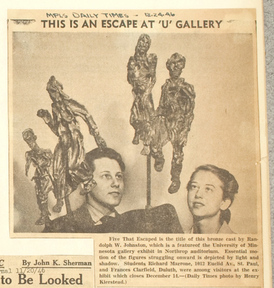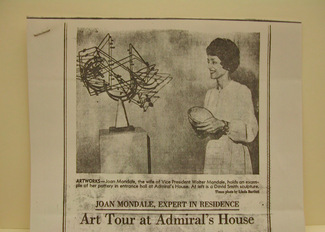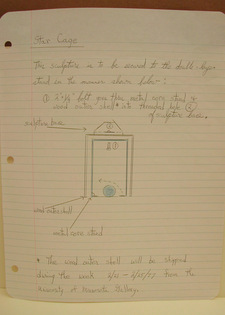From the beginning, the exhibition philosophy of the University Gallery was guided by a simple purpose – to expose University of Minnesota students to new forms of art in order to further understanding and cultivate appreciation. The exhibit Understanding Sculpture Today, held from November – December 1946, is one example of an application of this philosophy.
 The University Gallery press books contain various articles, printed by local newspapers, which promoted and reviewed the exhibit. According to these sources, the exhibit was assembled by William Saltzman (acting director), and included 40 works of sculpture loaned by galleries and individual artists throughout the country. According to Saltzman, who was quoted in a November 1, 1946 MN Daily article, “The purpose of the exhibit, as the title implies, is to present various media and methods of interpretation as found in contemporary sculpture.”
The University Gallery press books contain various articles, printed by local newspapers, which promoted and reviewed the exhibit. According to these sources, the exhibit was assembled by William Saltzman (acting director), and included 40 works of sculpture loaned by galleries and individual artists throughout the country. According to Saltzman, who was quoted in a November 1, 1946 MN Daily article, “The purpose of the exhibit, as the title implies, is to present various media and methods of interpretation as found in contemporary sculpture.”
The exhibit included “Two Bodies,” by Alexander Archipenko, “Overture,” by Calvin Albert, “Hanging Mobile,” by Alexander Calder, and “Biography in Bronze,” by Carl Milles. Various local artists were also represented in the exhibit, to include University of Minnesota art professor S. Chatwood Burton, and Evelyn Raymond of the Walker Art Center.
University student Stan Hietala reviewed the exhibit in a November 22, 1946 MN Daily article titled, “From Marble to Plexiglas: Sculpture Shows Versatility.” Hietala reported, “The show is an excellent example of the ability of William Salt[z]man, gallery assistant director, and his staff. It answers a need in a field somewhat unknown to the [non-art] student, helping him to understand today’s sculpture.”
The Minneapolis Daily Times printed a photograph of two University students observing a sculpture titled, “Five That Escaped” (above). The sculpture was popularly mentioned in many of the articles about the exhibit. Hietala’s review also mentioned the work:
“Quite often an artist is found who expresses his emotions primarily, ignoring conventional style or contemporary trends. In Randolph W. Johnson’s bronze… the sculptor almost achieves pure emotionalism, void of dogmatic style.
The five figures are stumbling along, fatigued, yet in haste. Their whole demeanor reflects horror and fright.”
WAM continues to promote the understanding of sculpture in the museum galleries, as well as throughout campus. Archipenko’s, “Two Bodies” is currently on display in the Woodhouse Gallery, and is one of many examples of sculpture that can be found within the museum. For the current Target Studio for Creative Collaboration exhibit, contextual flux, artist Jason Hackenwerth worked with University students (to include several studying “non-art” disciplines) to produce new sculptural forms. Throughout the University, over 30 different forms of sculpture can be found in courtyards, building entrances, lounges, garden spaces, and other campus locations as part of the Public Works of Art program.
For current University of Minnesota students – and visitors – who have harbored a latent curiosity in regards to the shapes and forms that they encounter on campus, opportunities abound at WAM for them to start understanding sculpture today…

